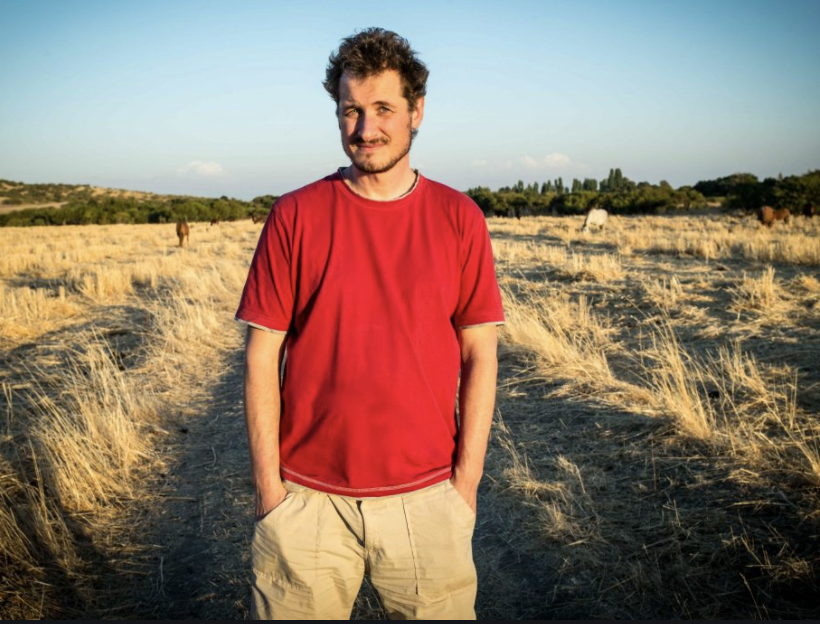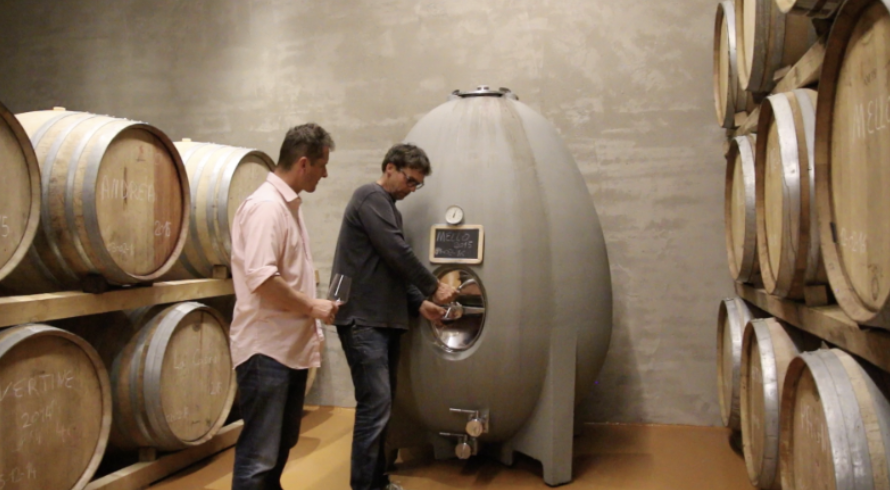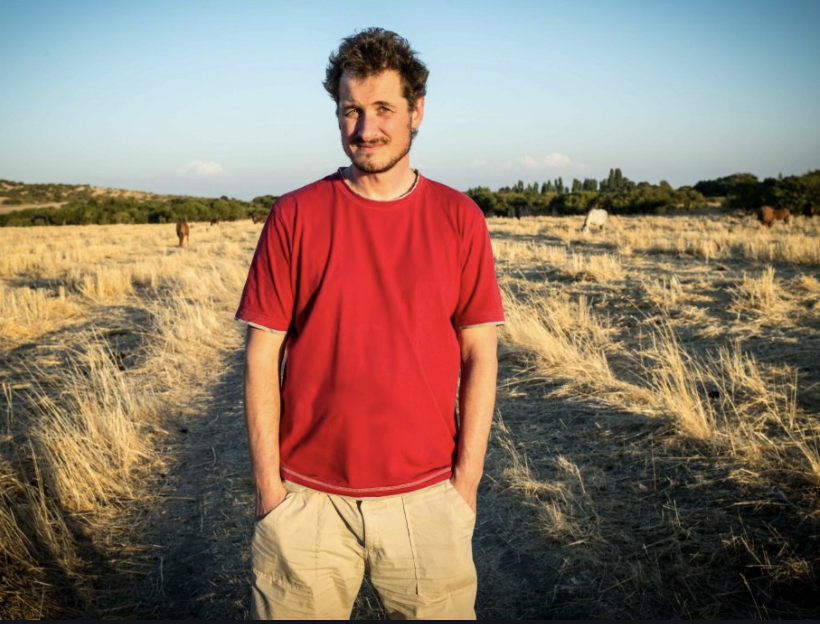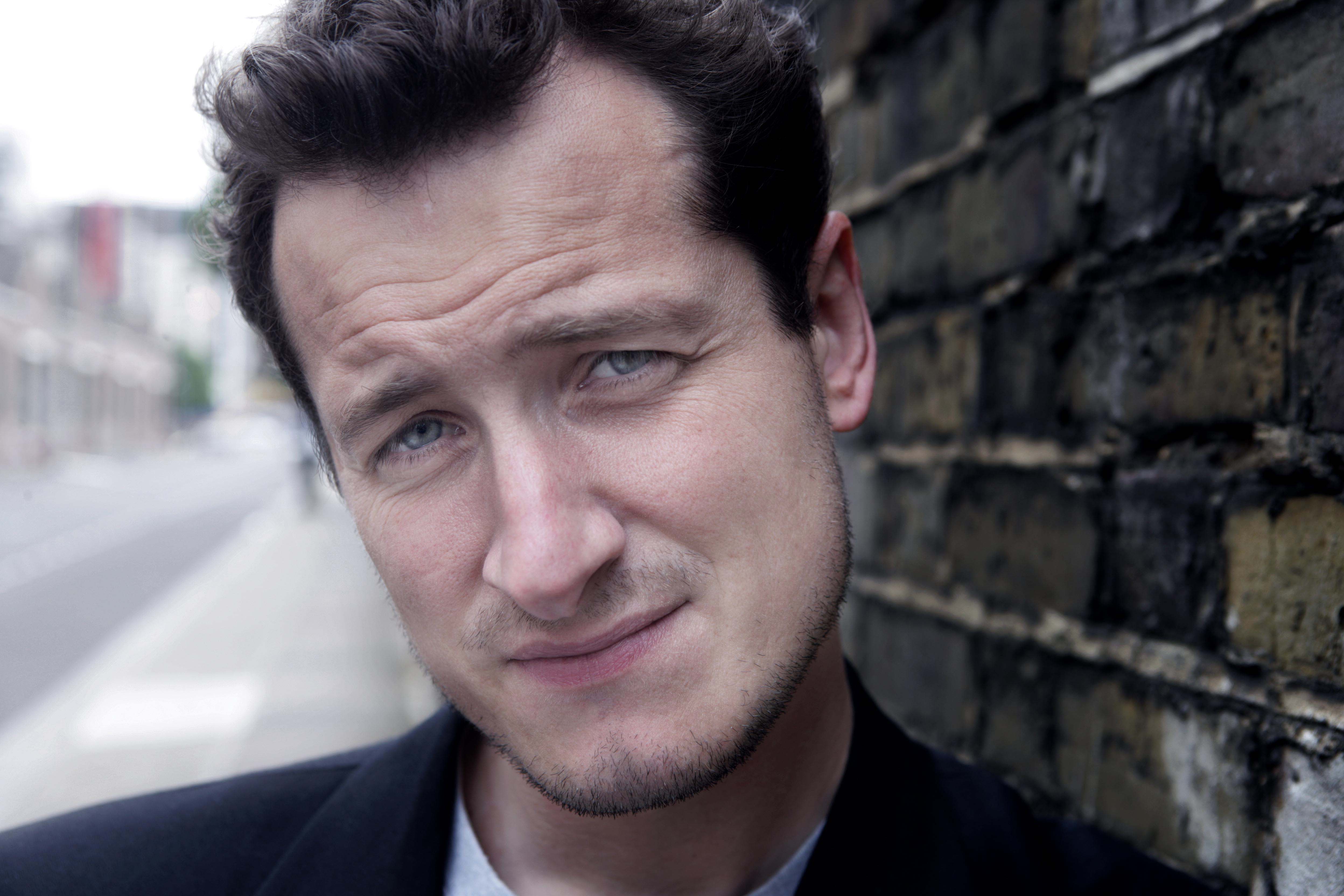
Monty Waldin on organic viticulture in Tuscany
During my 25-year career as a wine journalist and Biodynamic consultant, I have become an outspoken advocate for certification. I started out in my career working as a part-time trainee for 14 wine estates. Seven conventional (four of which transgressed the grape growing or winemaking rules, none of them famous), one natural estate (very well known in its region and internationally, and a perpetual transgressor of the rules and where I left pretty quickly), two certified Biodynamic estates (both 100% by the book), four certified organic estates (all clean). Certification protects the consumer from dubious marketing claims (clean wine), as well as importers who are reliant on the honesty of their producers.
I remember the times in conventional wineries when I was asked to use the 'black snake'–a winemaker term meaning using a water hose. In winemaking you are of course constantly hosing down the winery floor and stairwells (loose grapes are dangerously slippy) as well as tanks, pumps, hoses, barrels, grape presses, grape picking baskets and even your own waterproof trousers, all of which get dirty and sticky with grape skins, juice and fermenting wine.
It was a shock when as an idealistic, fresh-faced trainee I was instructed to use the black snake to water down fermenting grape juice. We had to do it because the sugar (potential alcohol) level in the grapes was too high. Watering it down was not so much about trying to get more bottles of wine on the cheap (which is illegal). It was because the area we were in and the way the vineyards were managed–lots of sun, lots of irrigation and literally tonnes of fertilizer–gave absolutely huge yields of very ripe wine grapes with slightly too high levels of alcohol for our chosen destination markets. The wines tasted absolutely great for their price point and no one would have guessed they were a combination of Semillon Blanc, Sauvignon Blanc and Snake Noir.

(Winemaker Sean O'Callaghan of Riecine in Chianti Classico with Monty Waldin)
In the Northern Hemisphere the opposite problem presented itself with grapes whose sugar levels were too low. I lost count of the times I was told to add sugar to fermenting wines in order to boost low potential alcohol levels–due to excess rainfall, a lack of sunlight or heat, excess yields, and so on (in other words the exact opposite of the Southern Hemisphere). Adding sugar–or chaptalization–is legal up to a certain limit, in Europe.
In France where I was working (in Bordeaux to be precise) you must notify the authorities before you add the sugar, if you are chaptalizing over the legal limit. This is because alcohol is taxed, and boosting the alcohol level (with sugar) attracts extra tax and if you fail to declare this it is a serious offense (stealing from the French state).
My boss–who was quite ill due to stress (and overeating) provoked by serious financial troubles– sent me to the tax office to pay the relevant fee. The female official there asked me, "When do you propose to add the sugar to chaptalize (over the legal limit) the wine In vat no. 63?" or whatever vat it was. I told the truth which was, "I did it this first thing this morning because if not the fermentation would have stuck." She stifled a laugh before gently telling me I had in fact broken the law. I was not to do it again, and I was to chaptalize (add sugar) ONLY once I had the correct documents from the relevant French government department in the future. What I had omitted to tell here were two more things.
The first was we had bought sugar on the black market, in cash, with no paper trail. The reason was we were in fact chaptalizing over the legal limit. This was because we were pushing yields to be able to make more bottles to solve our financial issues. Our vines were weak so thus were our grape sugar levels. We’d hide the no-paper trail sugar sacks in the storage area (a former stable) behind the pallets of bottled and labeled wines we’d been unable to sell from previous vintages. The fact that this kind of behavior was rife, and everyone knew it was, again begged the question: why keep up the facade?
So far what I have recounted are nothing more than minor transgressions that can happen by accident or design in any industry with no seriously adverse consequences to our health or pocketbook. I do tend to take things literally and I am frequently chastised by my always in-a-hurry Italian family for sticking rigidly to speed limits when driving.
But my argument is why bother having rules which intend to make the playing field a level one for all if only some rather than all choose to play by the rules.
Organics and Biodynamics in wine have grown steadily over the last 25 years or so, especially in Europe. France, Spain, Germany, and Italy all have over 10% of their national vineyards certified organic or Biodynamic (sic). From around 2010 onwards natural wine appeared as if out of nowhere–although natural wines had been bubbling under the surface for around 20 years or so, mainly in France and Italy.
 Natural was different for two reasons. Its ideology was focusing on reducing or completely eliminating additives, aids and agents to wine and un-natural winemaking practices in general.
Natural was different for two reasons. Its ideology was focusing on reducing or completely eliminating additives, aids and agents to wine and un-natural winemaking practices in general.
By un-natural winemaking additions we mean things added to wine which stay in it. Examples include sulfur dioxide, added tannins, sugar for chaptalization, and tartaric acid.
Un-natural winemaking aids include yeast hulls which can kick-start stuck fermentation but which do not stay in the wine. Un-natural winemaking agents include those used in fining like gelatin or even egg whites which do not stay in the wine but would still render a wine unsuitable for vegetarians or vegans.
My view is a bit simplistic but I say the more good interventionist work you do in the vineyard gives you the freedom to be less interventionist–in terms of aids, additives and agents–in the winery.
Policing claims of naturalness in wine has not been easy. Unlike their organic and Biodynamic peers, those in the natural wine movement elected not to seek third party certification. Natural wine growers have given me various reasons for this antipathy to external oversight over the years, the most common of which is the time and cost of preparing the paperwork. But not only do small organic and Biodynamic estates manage to do it, they get subsidies (in the EU) for proving their organic bonafides. Organic certification also gives easier access when tendering to state alcohol monopolies, in Canada, Sweden and Norway for example.
I'd been to a dozen or so organic wine fairs–winegrowers showing 100% certified organic or Biodynamic wines–before my first natural wine fair. At this fair, one of the first to be held in London, I was surprised to see a particularly opportunistic vineyard owner. He told me organic certification was both expensive (he sported a bespoke suit and silk Hermès tie) and superfluous as his winery was very well known and well reputed (both true). He omitted the real reason he was not certified organic was because he’d spot spray troublesome parcels with systemic fungicides when needed.
I thus welcome with open arms the recent creation (October 2019) in France of 'Vin Méthode Nature.' This is the official French term whose direct English translation is Natural Wine Method (wine made naturally). Vin Méthode Nature denotes a wine made from certified organic or certified Biodynamic grapes (organic certification being a baseline for the latter), hand picked, and fermented with ambient (indigenous) yeasts. Up to 30mg per liter of sulphur dioxide is permitted for wines of any style but its addition must be after alcoholic fermentation ceases and whose presence must be signaled on the label. Heavy-handed winemaking practices are not permitted such as flash pasteurization, reverse osmosis, thermovinification and cross-flow filtration.
Monty Waldin talks with wine pioneer Elisabetta Fagiuoli of Montenidoli in the San Gimignano, Tuscany
This is a good first step, but it doesn’t go far enough to protect the values of the natural wine movement. The next task must be a social contract between winery owners and their staff and communities for fair working conditions. In Biodynamics, the concept of the three-fold social order reveals the need for human endeavor to be organized into the three distinct spheres. These are legal rights; cultural/spiritual activities; and economics.
Each sphere is recognized as having a certain independent life to begin with. A germinal form of this idea served in the French Revolution as the rallying cry "Liberty, Equality, Fraternity." In terms of the Threefold Social Order, this 18th century phrase means liberty in the spiritual/cultural sphere; equality in the legal sphere; and fraternity in the economic sphere.
The issue of workers' rights is becoming ever more pressing, as jobs-for-life dwindle in favour of temporary, short-term contracts which favour employers rather than the employed.
The recent arrest of Puglian businessman Settimio Passalacqua (who owns vineyards and other agricultural products) for alleged mistreatment of temporary migrant workers impacted on the neighbouring vineyard too.
This is owned by his daughter, Valentina Passalacqua, whose wines are variously described as natural, organic (the estate has been certified organic for many years), and Biodynamic. The estate is also a member of body called AgriBioDinamica, the Italian counterpart to the Renaissance des Appellations group of Biodynamic wine growers. Based in France, Renaissance des Appellations is a private group created by Nicolas Joly, one of the most high-profile Biodynamic producers. But I was unable to find any mention in the Renaissance des Appellations rulebook (published in various languages) about the treatment of workers or staff. I drew another blank search for the welfare of staff in the rulebook published Association Demeter France, the body officially overseeing Biodynamic farming and wine growing in France.
As an industry we should demand stricter guidelines regarding the health, safety and well-being of vineyard workers, many of whom have non-fixed contracts, minimal insurance, the barest of employment rights, making them expendable. If you think this is all new it isn't. When I was working in Chile in the mid-1990s the working conditions the 'temporeras' or non-fixed contract workers suffered came under scrutiny. A radio documentary I tried to make about this failed because I was unable to get workers to go on record. If they did go on record their plight would have been even worse.
Worker exploitation is the dirty secret that our industry is turning a blind eye to. Wine journalists mostly exist in a symbiotic relationship with the wine producers and regional wine marketing associations. Most editorial efforts are directed at ratings and service journalism as the advertising from wineries and trade organizations keep the lights on at the major wine magazines. Very little work has been done on advocating for worker rights. A notable exception is the 2016 film, Bitter Grapes, by a Danish filmmaker exposing exploitation of South African vineyard workers.
The irony in our industry is the cast-iron truth that there is no terroir expression in wine without the human hand. While we are fussing over the ethics of snake noir wine the real tragedy is the exploitation of workers and the conditions of poverty that they and their families are forced to exist in. I hope that the Passalacqua affair shines a light on this important issue and the certification boards take notice and include in their rules safeguards for the working families who make the wine on our table possible.
For more on the Valentina Passalacqua allegations read the fine piece by Eric Asimov in the New York Times and in The Drinks Business.
Read Monty Waldin on Hipster Somms and Why Black Magic Wine is Delicious Wine.
More Monty Waldin on Grape Collective.
The Italian Wine Podcast- check it out on Soundcloud and iTunes.
Monty Waldin was the first wine writer to specialize in green issues. He is the author of multiple books, including The Organic Wine Guide (Thorsons, 1999); Biodynamic Wines (Mitchell Beazley, 2004); Wines of South America (Mitchell Beazley, 2003), winner of America’s prestigious James Beard Book Award; Discovering Wine Country: Bordeaux (2005) and Discovering Wine Country: Tuscany (2006), both Mitchell Beazley; and Château Monty (Portico, 2008). Monty has contributed on topics of organic and Biodynamic wine to Hugh Johnson’s Pocket Wine Guide, Tom Stevenson’s Wine Report and he wrote the entries for Biodynamics and organics in The Oxford Companion to Wine (2015; 2006). He has also contributed to BBC radio and TV, numerous British newspapers and websites, as well as to wine, travel and environmental publications including Decanter, World of Fine Wine, The Ecologist, Star & Furrow (journal of the Biodynamic Agricultural Association, UK) and Biodynamics (journal of the Biodynamic Farming & Gardening Association, USA). His most recent books are Monty Waldin’s Best Biodynamic Wines (Floris, 2013) for wine drinkers, Biodynamic Gardening (Dorling Kindersley, 2014) for biodynamic home gardeners, and Biodynamic Wine (2016, Infinite Ideas Oxford), the comprehensive how-to guide for biodynamic wine-growers and students of biodynamic wine.
https://www.amazon.com/Monty-Waldin/e/B001K8EIVS
Banner by Piers Parlett










